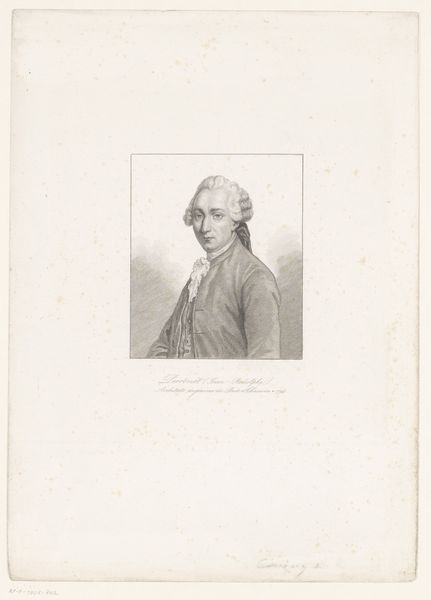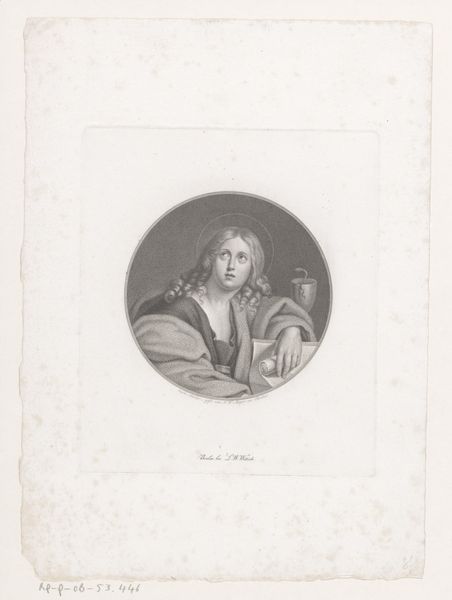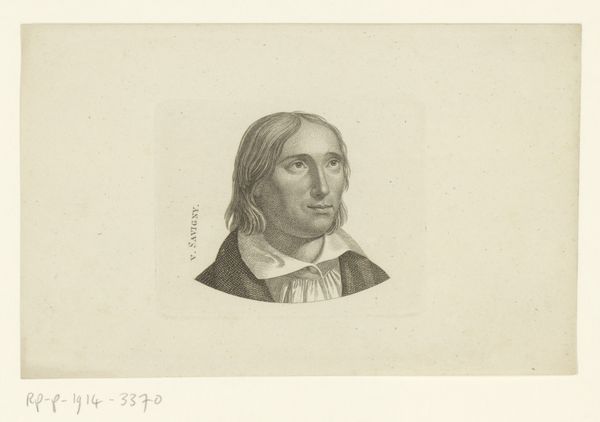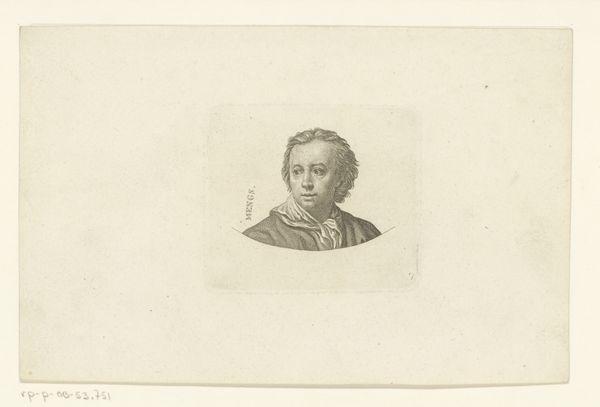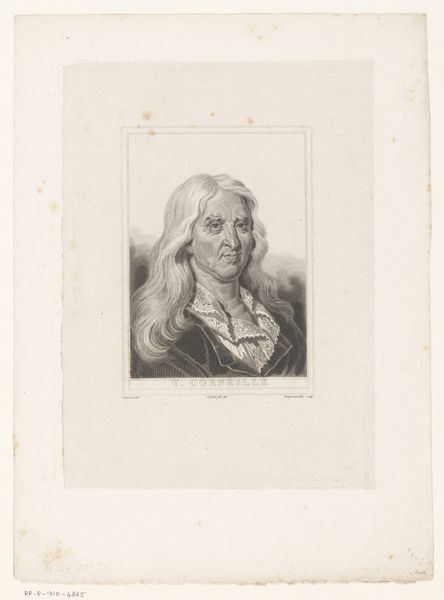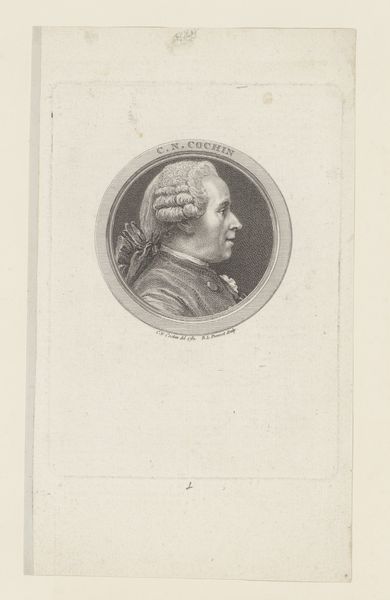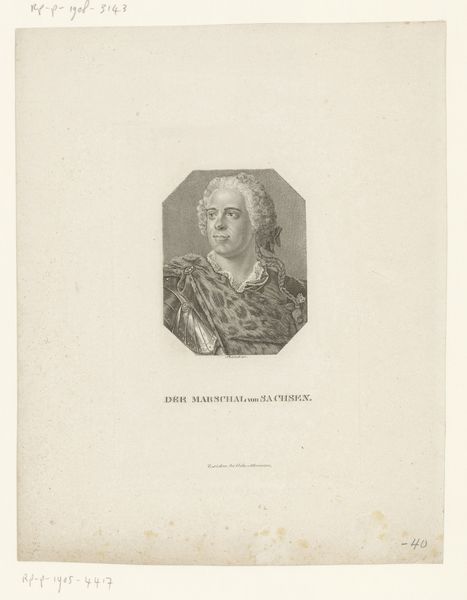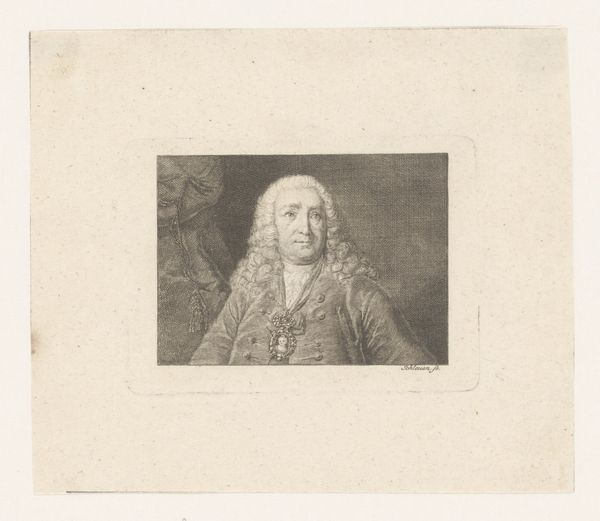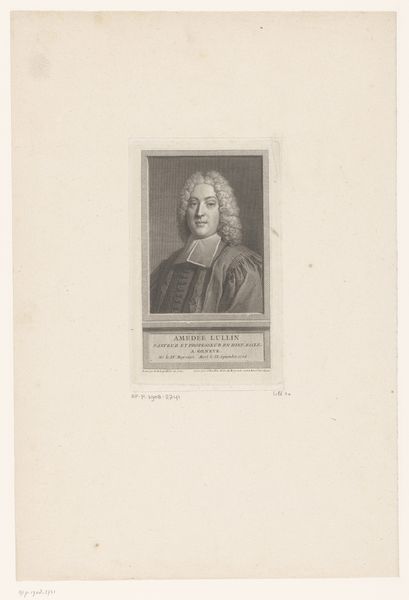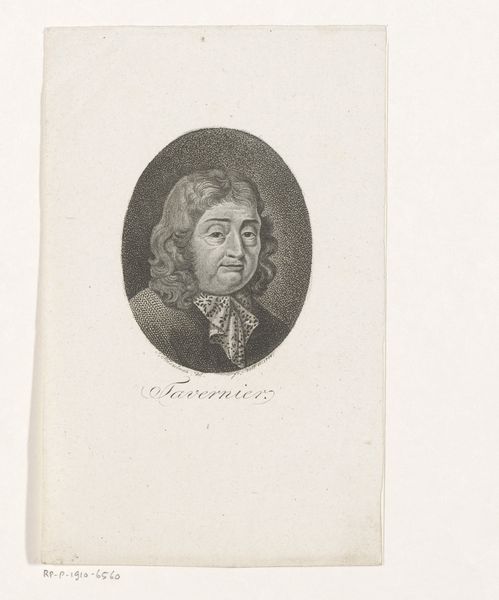
print, engraving
#
portrait
# print
#
old engraving style
#
romanticism
#
line
#
history-painting
#
engraving
Dimensions: height 64 mm, width 85 mm
Copyright: Rijks Museum: Open Domain
Editor: So, here we have Ernst Ludwig Riepenhausen’s portrait of Friedrich von Schiller, created sometime between 1775 and 1840, using engraving. It’s a very fine, almost delicate image. How do you interpret this print? Curator: As a materialist, I look first to the process. Engraving, especially one as finely detailed as this, involved significant labor and skill. Each line is deliberately etched, requiring precise tools and knowledge. The material, likely copper or steel, dictates the scale and the fineness of detail achievable. It challenges the traditional divide because it can be mass-produced, shifting it into the realm of consumer goods, available for broader consumption. Editor: That's interesting. I hadn't thought about the print itself as a commodity. How does that perspective change how we view the portrait? Curator: It pushes us to consider who this image was *for*. Not just an elite patron, potentially, but perhaps a growing middle class hungry for representations of cultural figures. We can explore how prints like these shaped Schiller’s image, transforming him into a symbol beyond his literary work. This kind of image creation became integral to solidifying an author's legacy. And how does the 'romanticism' tag on the engraving work in the material context of it, with romanticism itself increasingly being distributed for mass consumption in things like printed novels, music, etc. Do you see what I mean? Editor: I do! It highlights the accessibility and reach of Schiller’s persona at that time, which goes beyond a conventional artistic appreciation of aesthetics and individual craftsmanship. It shifts our attention to the broader social consumption of Romanticism. Curator: Exactly. Seeing art through its production and dissemination provides context to understanding its historical impact. Editor: I've learned so much today about how artistic methods can affect the social implications.
Comments
No comments
Be the first to comment and join the conversation on the ultimate creative platform.
